Chapter 10 discusses functional dependencies and normalization within relational databases, emphasizing the design of 'good' relation schemas and identifying criteria for these schemas. It outlines the different normal forms including 1NF, 2NF, 3NF, and BCNF, defining key concepts such as functional dependencies, update anomalies, and the importance of minimizing redundant information. The chapter highlights guidelines to ensure that database designs effectively meet relational integrity and minimize issues related to data redundancy and spurious tuples.
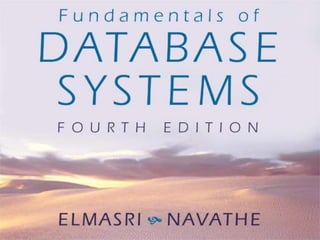
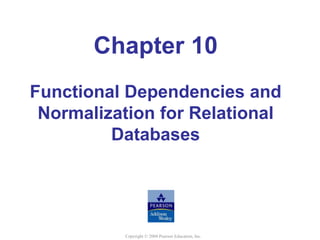



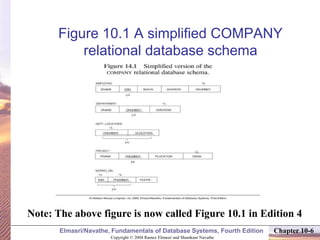


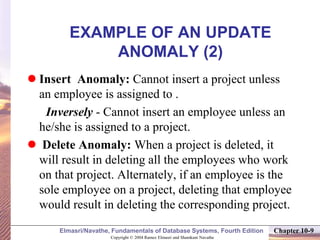

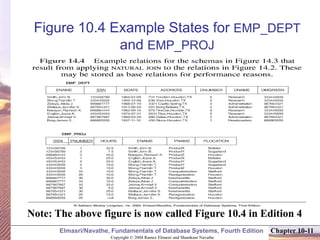



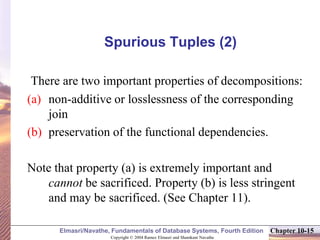
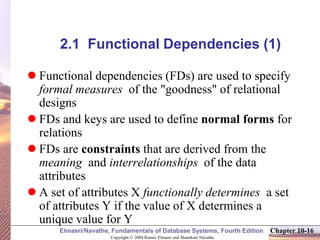
![Copyright © 2004 Ramez Elmasri and Shamkant Navathe
Elmasri/Navathe, Fundamentals of Database Systems, Fourth Edition Chapter 10-17
Functional Dependencies (2)
X -> Y holds if whenever two tuples have the same value
for X, they must have the same value for Y
For any two tuples t1 and t2 in any relation instance r(R):
If t1[X]=t2[X], then t1[Y]=t2[Y]
X -> Y in R specifies a constraint on all relation instances
r(R)
Written as X -> Y; can be displayed graphically on a
relation schema as in Figures. ( denoted by the arrow: ).
FDs are derived from the real-world constraints on the
attributes](https://image.slidesharecdn.com/normalization-240501124353-0b39face/85/normalization-in-SQL-BEST-NOTES-PPT-AVAILABLE-17-320.jpg)

![Copyright © 2004 Ramez Elmasri and Shamkant Navathe
Elmasri/Navathe, Fundamentals of Database Systems, Fourth Edition Chapter 10-19
Examples of FD constraints (2)
An FD is a property of the attributes in the schema
R
The constraint must hold on every relation
instance r(R)
If K is a key of R, then K functionally determines
all attributes in R (since we never have two
distinct tuples with t1[K]=t2[K])](https://image.slidesharecdn.com/normalization-240501124353-0b39face/85/normalization-in-SQL-BEST-NOTES-PPT-AVAILABLE-19-320.jpg)



![Copyright © 2004 Ramez Elmasri and Shamkant Navathe
Elmasri/Navathe, Fundamentals of Database Systems, Fourth Edition Chapter 10-23
3.3 Definitions of Keys and Attributes
Participating in Keys (1)
A superkey of a relation schema R = {A1, A2, ....,
An} is a set of attributes S subset-of R with the
property that no two tuples t1 and t2 in any legal
relation state r of R will have t1[S] = t2[S]
A key K is a superkey with the additional
property that removal of any attribute from K will
cause K not to be a superkey any more.](https://image.slidesharecdn.com/normalization-240501124353-0b39face/85/normalization-in-SQL-BEST-NOTES-PPT-AVAILABLE-23-320.jpg)
















